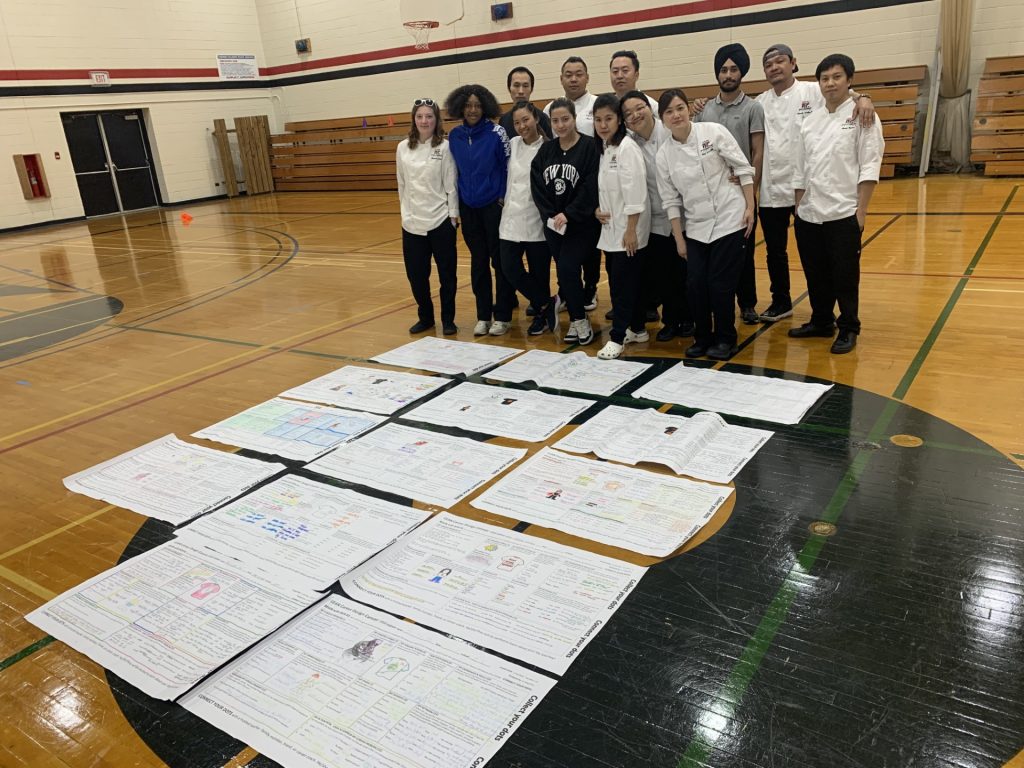|
Getting your Trinity Audio player ready...
|
With the celebration and pageantry of high school graduations in the rear-view mirror, a new cadre of young adults is stepping into budding career paths.
These transitions don’t come without angst. Focus groups held in 2023 and 2024 with Grade 11s and 12s in Winnipeg’s Louis Riel School Division suggest students are worried about making the right decision or choosing the wrong path after high school. A 2024 career survey I conducted with Collège Jeanne Sauvé students revealed 67% of Grade 10s were concerned that not enough is being done to prepare them for a career path. And in a recent CERIC focus group, students asked for more support in high school to support their career planning.
Leaving high school and deciding on a new path can be messy. Each grad is now wholly in charge of their pathing, shifting from a highly organized high school world of 30 credits managed by adults to an unstructured world with a smaller support system and more individual responsibility.
Career planning is the single common need of students in the system; students need support, and the evolving work environment offers no guarantees.
We can help students with a paradoxical notion: embrace the chaos.
It’s a chaotic world
Career development has a chaotic vibe that can excite students.
Jim Bright, co-writer of the Chaos Theory of Career Development, asserts that life has a randomness and uncertainty that makes planning for a career difficult, despite our best efforts and intentions. The theory posits that linear career planning is from a past era. With jobs evolving rapidly, students will struggle to determine what’s right for them.
The status quo is continually disrupted with evolving jobs, hybrid work environments, new education credentials, AI impacts and skill gaps moving the goalposts about what to choose for the first steps after high school.
“Career development has a chaotic vibe that can excite students.”
Add the happenstance of everyday life and work – a chance meeting with someone, a tap on the shoulder, discovery of new information, a family conversation, a surging new industry – and students need to be ready to pivot any planning.
As Winnipeg Chamber of Commerce CEO Loren Remillard wrote to me, “students need to be ready to make multiple career changes, not just job changes, so there are really no wrong choices, as you will likely have to make many choices.”
He emphasizes that creativity and agility are the new skills in great demand — those who move quickly, adapt nimbly, solve problems creatively and accomplish tasks faster will be better positioned to thrive in the labour market.
There’s a lot to think about after high school. One thing is clear: the linear one-job-for-life narrative is the old way of doing business – student must learn how to embrace this new messy narrative.
It’s a captivating challenge, and reviving students’ innate curiosity offers the solution.
Curiosity is lacking in schools
Curiosity is the key to every inspired thought, idea and question. The allure, mystery and excitement of discovering creative questions will help students sort through the chaos.
Minor problem: we can’t keep students curious enough during their school experiences.
A typical four-year-old can exhaust a parent’s patience with continual questions. In The Book of Beautiful Questions, Warren Berger writes, “Studies have shown that children at that age may ask anywhere from 100 to 300 questions a day.”
Evolving research, ignited by the much-viewed 2007 Sir Ken Robinson TED Talk “Do schools kill creativity?”, reveals that as students move through the school system they question less and become less curious. Louis Riel School Division’s 2024 OurSCHOOL Survey finds that 82% of Grade 4s are “interested and motivated” in their learning; this number dips to 40% among Grade 12 students.
Bored high school students become bored workers. A 2023 study by Gallup revealed nearly eight in 10 Canadian employees are disengaged in the workplace.
High school students are sentient, curious beings. They just need something to get curious about. The chaos of career development can fill this important gap.
Asking questions that connect the dots
Questions are often the hallmark of a curious mind. According to Nobel Prize-winning psychologist Daniel Kahneman, questions involve “a type of ‘slow thinking’ – a deliberate, effortful cognition that tends to lead to better decisions, choices, and actions.”
When students feel confused about what to do after high school, I ask them to formulate a question based on the experiences (AKA “dots”) they’ve collected in their lives using the LEAN Career Design Canvas. This career design tool begins with a driving question about learning, life, career or work. “What should I do after high school?” is a frequent opening query.

As they assemble and reflect on their dots “looking backward,” as Steve Jobs encouraged students to do in his 2005 Stanford University address, curious questions and themes begin to emerge.
Parts of the Canvas have a random feel because life does. Everything a person has done finds its space on the Canvas and the dots don’t follow a discernable order.
Reflection turns students’ disparate dots into possibilities fuelled by questions. How do I overcome my fear of presenting? Can playing hockey connect with math and data analytics? What’s the best path to work in AI? How does volunteering connect to my social sensibility? What are the climate change jobs out there? Curiosity turns messy into focus. Focus becomes purposeful. The right questions have no choice but to surface.
Serhii Pashchenko, a 2024 New Media Design grad from the Louis Riel Arts and Technology Centre who completed the LEAN Career Design Canvas, quickly found work in CAD design with a computer company. He knows he needs to ask more questions.
As he collects more dots, he wonders about education paths and project management skills that surfaced in his Canvas. He realizes that “small questions can build into something more serious.”
The Canvas experience allows students to re-learn what they knew at one time instinctively: that there is joy in discovery and surprise.
The chaos and the questions
Every student is curious, waiting for a chance to connect their lives to their school routines. The right questions can empower them to seek opportunities that align with their best selves. When students reconnect to their curious inner child, they build the agility to not only survive amid chaos, but also to thrive.
So, bring on the chaos.
And watch the questions flow.
NOTE: I’m happy to share the Canvas if you’d like to try it out with your students. Email me at anomag60@gmail.com.







This is a great article. I am a big fan of Dr. Jim Bright. In spite of the obvious chaos in the labor market, career practitioners often hold on to old paradigms long past their usefulness. The one career lifestyle or plan is a vocational dinosaur that has not been relevant for most people for decades. Teaching students to think in terms of a journey of exploration though the world of work with the kind of surprises and unplanned events an explorer will experience is a much better approach than focusing on a career. It fits better with the realities of today's world of work.